In this event, leaders from both business and organized labor discuss how they can innovate and work together to achieve shared prosperity. The conversation offers a glimpse of how business leaders have begun to reimagine their relationship with organized labor, including a fireside chat with AFL-CIO President Liz Shuler.
This piece provides a summary and highlights from “Good Work in the Gig Economy: Building a Sustainable App-based Economy,” an Opportunity in America event EOP hosted in 2023.
For more than two decades, the Vermont Employee Ownership Center (VEOC) has worked to raise awareness and grow employee ownership in the state, including by providing technical and financial assistance to firms looking to transfer ownership to their workers. Vermont is home to several notable employee-owned companies, like Gardener’s Supply Company and King Arthur Flour, boasting one of the highest rates of employee ownership in the country, and the benefits of this shared prosperity are measurable. The state’s 55 employee-owned companies tend to have higher employee retention rates and narrower pay gaps between leadership and workers when compared to conventionally owned companies. And Vermont’s employee-owned companies report that employee ownership has improved their resiliency. The history of employee ownership in Vermont and the work of VEOC provide useful guidance and insight to those seeking to grow employee ownership and develop new state centers.
This op-ed, originally published in the Chronicle of Philanthropy, discusses how philanthropy can help support job quality as the federal government invests in clean energy and infrastructure.
In this interview, Chris Fredericks, founder and CEO of the employee owned company Empowered Ventures, reflects on methods to grow employee ownership and the benefits of employee ownership for a company and its workers.
This piece reflects on the Aspen Institute Economic Opportunities Program’s event “Economics Reimagined: A Discussion on Building a Human Rights Economy,” which discussed how to build an economic system that values and centers the well being of people.
In this event, Zeynep Ton, author of “The Case for Good Jobs: How Great Companies Bring Dignity, Pay, and Meaning to Everyone’s Work,” discusses the components of a “good jobs” system, which ensures a living wage, dignity, and opportunities for growth to employees, and helps to foster shared success for both workers and organizations. Ton — a professor at MIT’s Sloan School of Management and president and co-founder of the Good Jobs Institute — explores the benefits of this approach; the disadvantages of low-paying and high-turnover jobs; how labor investments can pay for themselves; the obstacles to creating a good jobs system; and how leaders can break free and overcome these challenges to create good jobs.
As growing numbers of business owners retire, efforts are underway to help them convert their business to employee ownership, including worker cooperatives. Despite this momentum, however, worker cooperatives remain a small part of the US economy, and growing the model can be challenging. In this event, panelists share success stories — at home and abroad — and discuss what we can learn from them, including how to remove barriers to cooperatives’ growth.
It takes intention to design a workplace culture that fully leverages the strengths of employee ownership. In this event, panelists discuss the diverse ways that employee ownership can be realized for a business, including employee stock ownership plans, employee ownership trusts, worker-owned cooperatives, and equity compensation programs. Each holds different advantages and disadvantages, and they can differ in their profit sharing, costs, flexibility, and how workers are involved in decision making.
This piece reflects on the Aspen Institute Economic Opportunities Program’s event “Democratizing Work: The Role, Opportunities, and Challenges of Worker Cooperatives in the US,” which introduced the US movement for worker cooperatives and discussed their potnetial to improve job quality.
